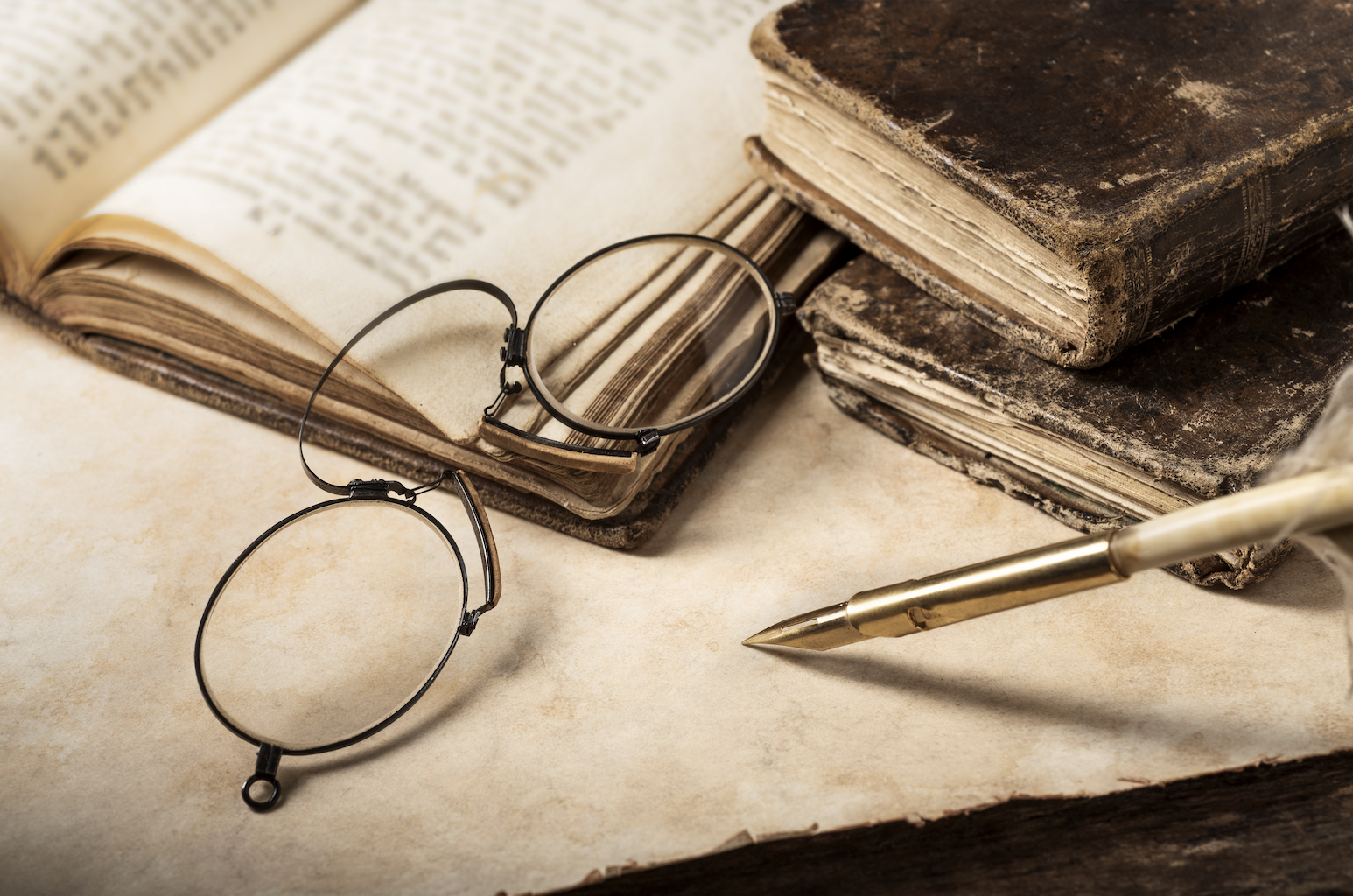Employee
The History of Glasses
Did you know that people have been using some type of vision-correcting tools since as early as 60 A.D.?
During that time, Emperor Nero had trouble watching his gladiators fight without his magnifying emerald, and roman philosopher Seneca used a glass globe of water to magnify text as he read. These tools allowed them to correct their vision before glasses. But as time and science improved, these tools led us down the long road and took us to where we are now: clear vision.
Centuries of Corrective Lenses
Almost a thousand years after the emeralds and globes, lenses were manufactured to help with reading. The monks in Europe during the 10th century came up with the idea to polish domes of transparent quartz and called them “reading stones.” By polishing them, they were able to see the fine details in their calligraphy. A couple of centuries later, the idea to put the reading stones into frames allowed the lenses to be wearable. Salvino D’Armati, a Florentine, was credited with the invention of spectacles, but many scholars don’t believe he existed. Most believe the real inventor is unknown.
Glasses: From Status Symbol to Commonplace
In the beginning, spectacles were only made out of expensive materials, like crystal. The cost made them hard for most people to attain unless you were of wealthy status, and therefore, they became a status symbol. In 1440, the printing press came along, and literacy rates skyrocketed, and so did the demand for reading glasses. They switched the material from crystal to glass and made them more affordable for all.
Over-the-Ear Frames and Prescription Lenses
Back then, glasses had come a long way but weren’t like they are today. Most pairs sat on the nose or were held in front of your face while in use. There were only so many glass blowers that could customize the thickness and shape for people with different refractive errors, too. But in the 1700s, glasses became hands-free with the addition of the temples, which extended over the ears.
Then Benjamin Franklin contributed to the eyewear process by inventing bifocals around the same time as hinges were introduced. The hinges allowed the glasses to be folded and stored in pockets. Eye doctors started getting better at tailoring lenses to patients’ specific needs, and the cylindrical spectacles came along in the early 1800s to correct astigmatism. But not until 1862 did Herman Snellen, a Dutch eye doctor, invent the “big E” chart that standardized vision correction.
From then on, there was a spectrum of vision disabilities.
Modern Glasses
Today, we enjoy the benefits of two thousand years of revision and improvements to vision correction. We have options to choose from for the materials based on our situations. We can add a protective lens coating to make them more effective and durable. We can now select from countless frame and lens shapes and styles to suit our personalities and face shape. The options are endless for us.
Safety Eyewear
Not only do we have a range of options for our everyday eyewear choices, but we also have available many options for prescription safety eyewear. Having the ability to keep our eyes protected and see clearly while doing multiple jobs or tasks has opened a new world of eyewear and glasses for many different situations. At SafeVision, our mission is just that. We want to keep everyone’s eyes safe while they work. If your company is looking to add a corporate program or invest in your employees’ safety, visit our website at https://safevision.com/.

